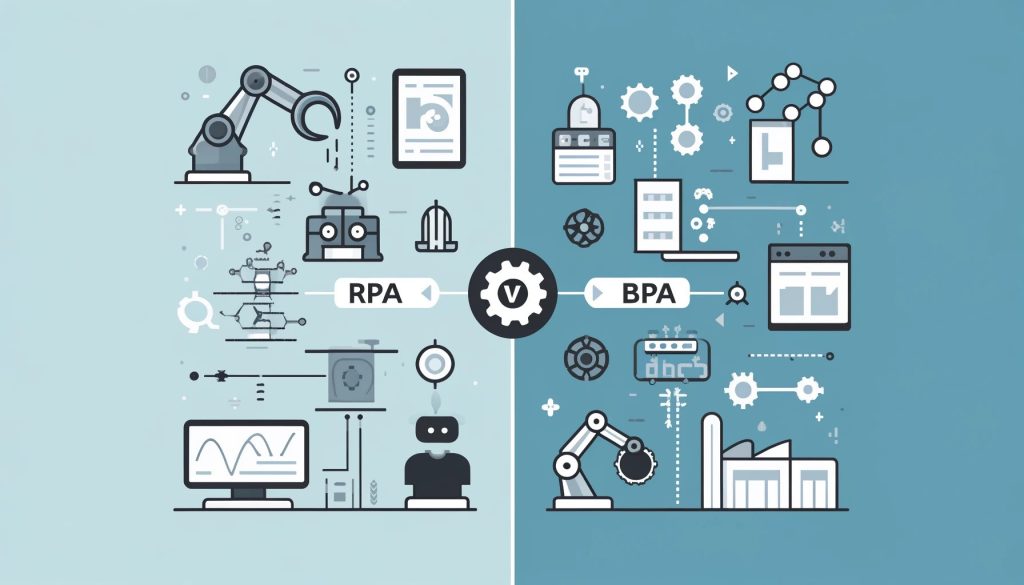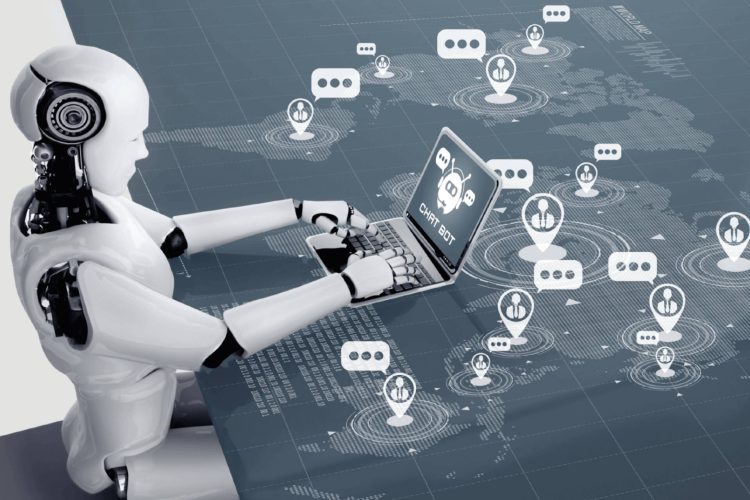Introduction
In today’s hyper-competitive business environment, organizations are under constant pressure to enhance operational efficiency, reduce costs, and improve service quality. One powerful solution that has emerged is Robotic Process Automation (RPA). RPA allows businesses to automate repetitive, manual tasks, thus increasing efficiency, reducing human errors, and providing substantial cost savings. As companies strive to transform their operations, RPA is increasingly being adopted across various industries, including finance, customer service, human resources, and more.
This article delves into how RPA is reshaping business processes, exploring its applications, benefits, challenges, and future potential. We’ll also examine the impact of RPA in specific areas like finance and customer service, shedding light on how these industries are leveraging automation to gain a competitive edge.
1. Understanding Robotic Process Automation (RPA)
1.1 What is RPA?
Robotic Process Automation (RPA) refers to the use of software robots, or “bots”, to automate routine, rule-based tasks traditionally carried out by humans. These tasks can include data entry, form filling, invoice processing, and more. RPA bots mimic human interaction with applications by following predetermined workflows and instructions.
Key Features of RPA:
- Rule-based Automation: RPA is most effective when automating repetitive tasks that follow clear, predefined rules. Unlike artificial intelligence (AI) or machine learning (ML), RPA doesn’t require decision-making or learning; it simply follows established instructions.
- No Coding Needed: RPA platforms are designed to be user-friendly, often featuring drag-and-drop interfaces that enable business users, not just IT experts, to build and manage automation.
- Multi-system Integration: RPA bots can interact with multiple applications (e.g., ERP, CRM, legacy systems) simultaneously, which allows for efficient cross-system data movement.
1.2 Key Components of RPA
To better understand RPA’s impact, let’s look at its core components:
- Bot Creator: This is the tool used to design automation processes, including workflows and tasks that the bot will perform.
- Bot Runner: This executes the automated tasks based on the workflows defined by the Bot Creator. Bots can run on different machines, and their tasks can be executed simultaneously, offering scalability.
- Control Room: A centralized management platform that provides oversight of RPA bots. It includes features such as bot monitoring, scheduling, and managing bot performance across various systems and processes.
2. RPA Applications in Key Business Functions
RPA is being adopted across a wide variety of business functions, where it’s making a substantial impact by improving efficiency and productivity. Below, we’ll explore its applications in two core areas—finance and customer service—that have seen the most significant advancements.
2.1 RPA in Finance and Accounting
The finance and accounting departments are often burdened with repetitive tasks such as data entry, reconciliation, and reporting. RPA offers a solution that reduces manual work, minimizes errors, and accelerates financial processes.
Key Applications of RPA in Finance:
- Invoice Processing: RPA can automate the entire invoice processing cycle, from data extraction (e.g., invoice amount, vendor details) to approval workflows and payment processing. This eliminates manual data entry, reduces errors, and speeds up the accounts payable process.
- Example: Companies like UiPath and Automation Anywhere offer automated accounts payable solutions that use RPA to capture invoice details, match them with purchase orders, and process payments automatically.
- Bank Reconciliation: In traditional processes, reconciling financial statements across different accounts and systems can take hours or even days. RPA can automate this process by comparing transactions, verifying data accuracy, and flagging discrepancies.
- Example: An RPA bot can extract data from the company’s bank statements and match it with the financial records in the ERP system, highlighting mismatches and ensuring accurate reconciliation.
- Tax Filing and Compliance: Financial companies and businesses that operate across multiple jurisdictions must ensure that their tax filings comply with the latest regulations. RPA bots can automate the extraction of relevant data, generate tax reports, and ensure timely and accurate submissions.
- Example: PwC uses RPA to automate complex tax processes, reducing the time spent on compliance and minimizing the risk of errors.
- Financial Reporting and Analytics: RPA can generate reports by pulling data from multiple sources (e.g., accounting software, spreadsheets, or cloud databases) and automatically updating financial statements. This streamlines the reporting cycle, providing management with real-time insights into the company’s financial status.
- Example: An RPA bot can automatically extract key performance indicators (KPIs) from the company’s ERP system and generate a financial dashboard that updates weekly.
2.2 RPA in Customer Service
Customer service is another area where RPA can significantly improve efficiency. By automating repetitive tasks, businesses can enhance the customer experience, reduce response times, and increase satisfaction while cutting down on labor costs.
Key Applications of RPA in Customer Service:
- Automated Customer Support (Chatbots): RPA bots can power chatbots to handle basic customer inquiries and support requests. Bots can answer FAQs, provide order status updates, and process simple transactions such as refund requests or product returns. When the complexity exceeds predefined rules, bots can escalate the issue to a human agent.
- Example: Bank of America’s Erica is an AI-powered virtual assistant that integrates RPA to offer customers personalized banking services like balance inquiries, bill payments, and transaction tracking.
- Order Processing: RPA can be used to automate order fulfillment tasks, such as verifying customer details, processing orders, updating inventory systems, and generating shipping labels. This reduces the manual effort required to handle each transaction and improves order accuracy.
- Example: Amazon leverages RPA in their order processing systems to automate inventory updates and shipment tracking, significantly speeding up fulfillment times.
- Customer Data Management: RPA can help businesses streamline their customer relationship management (CRM) processes. Bots can automate the updating of customer profiles, ensuring that information such as addresses, purchase history, and communication preferences are consistently accurate.
- Example: An RPA bot could automatically update customer profiles in Salesforce whenever a customer interacts with the support team, ensuring that the CRM reflects the most recent communication.
- Email and Document Management: Customer service departments often deal with large volumes of emails, documents, and customer inquiries. RPA can help by scanning incoming emails for key information, categorizing them based on urgency, and automating document processing.
- Example: Uber uses RPA to process customer emails and identify issues such as trip disputes or refunds, automating a portion of the customer support workflow.

3. Benefits of RPA for Enterprises
RPA brings significant advantages to businesses, from reducing operational costs to improving accuracy. Below are some of the key benefits:
3.1 Increased Operational Efficiency
RPA automates tasks that would typically require significant manual effort, resulting in faster processing times and fewer delays. Bots can work around the clock, handling multiple tasks at once, thus improving efficiency in operations that previously required manual labor.
3.2 Cost Savings
By automating routine tasks, RPA reduces the need for human intervention, which leads to significant labor cost savings. Moreover, as RPA reduces errors and rework, it minimizes the costs associated with mistakes and inefficiencies.
3.3 Enhanced Accuracy
RPA bots can perform tasks with high precision, ensuring that they follow predefined rules and processes exactly as designed. The reduced risk of human error increases data accuracy and ensures that tasks are completed without oversight.
3.4 Scalability
RPA offers scalability, meaning businesses can easily deploy more bots to handle increased workloads without having to significantly expand their workforce. Bots can be quickly adjusted to accommodate changes in business volume or operational complexity.
4. The Future of RPA: Trends and Opportunities
As RPA continues to evolve, its capabilities are expanding. Below are a few emerging trends and opportunities in the world of RPA.
4.1 Integration with AI and Machine Learning
While traditional RPA relies on rule-based automation, the future of RPA lies in its integration with AI and ML. This integration allows RPA bots to handle more complex tasks such as decision-making and predictive analysis. Cognitive automation will enable RPA to handle unstructured data and apply intelligence to tasks that go beyond simple rule-following.
4.2 End-to-End Process Automation
In the future, RPA will move beyond automating isolated tasks to automating entire business processes. This will allow businesses to achieve end-to-end process automation, eliminating bottlenecks, enhancing cross-functional collaboration, and improving overall efficiency.
4.3 Increased Adoption Across Industries
Although RPA is widely used in industries like finance and customer service, its adoption is set to expand into new sectors, including healthcare, manufacturing, and retail. RPA will help industries that rely on repetitive tasks to increase productivity, reduce operational costs, and enhance customer experience.
Conclusion
Robotic Process Automation is transforming the way businesses operate, providing significant improvements in efficiency, cost savings, and service quality. Its applications across key business functions such as finance and customer service are already delivering measurable results, and as the technology continues to evolve, the potential for RPA is vast. From automating simple tasks to enabling more complex, cognitive workflows, RPA will continue to shape the future of business operations. As businesses adopt and scale RPA solutions, they will be better positioned to navigate an increasingly digital and competitive landscape.


















































Discussion about this post